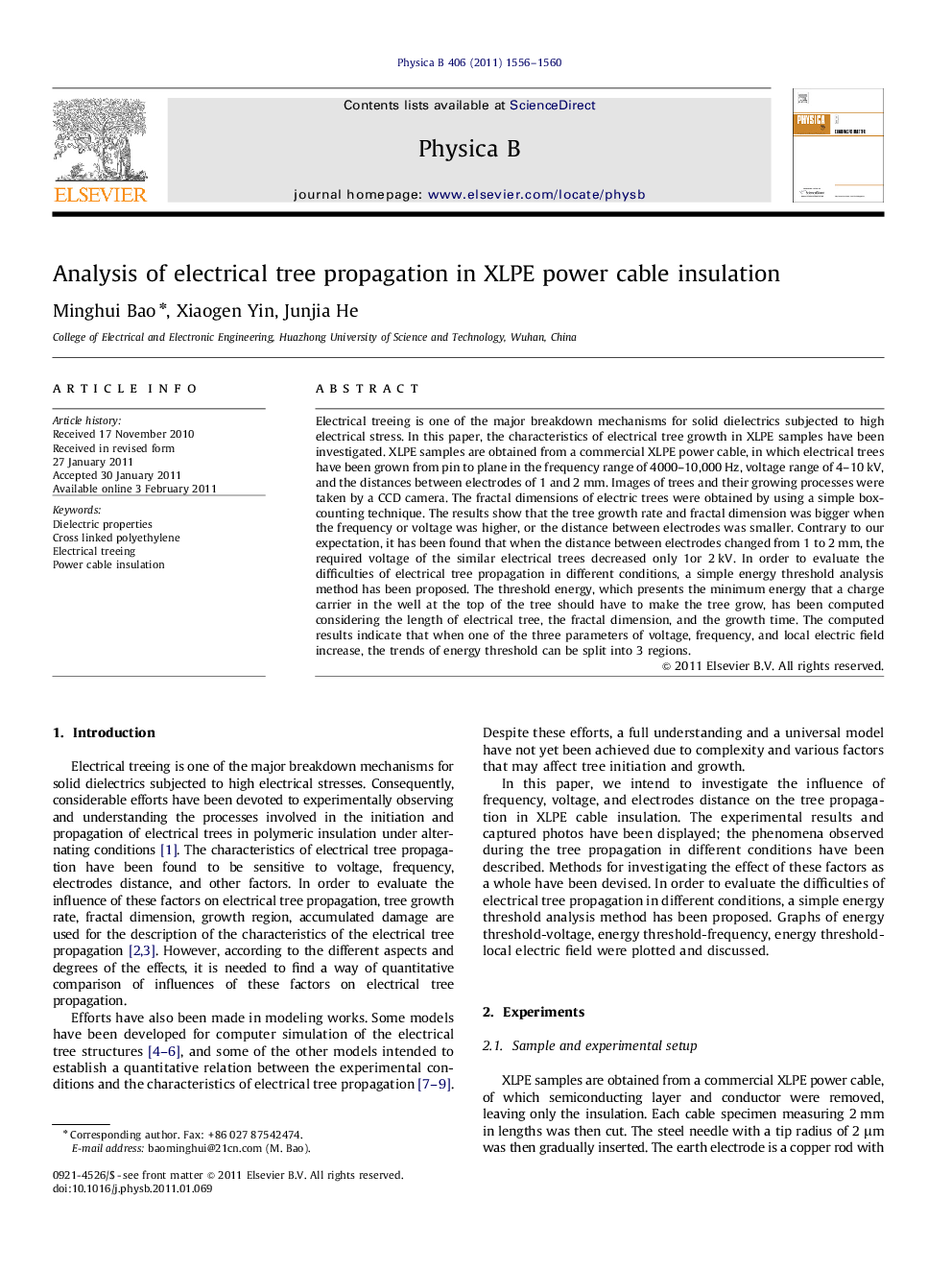| Article ID | Journal | Published Year | Pages | File Type |
|---|---|---|---|---|
| 1812279 | Physica B: Condensed Matter | 2011 | 5 Pages |
Electrical treeing is one of the major breakdown mechanisms for solid dielectrics subjected to high electrical stress. In this paper, the characteristics of electrical tree growth in XLPE samples have been investigated. XLPE samples are obtained from a commercial XLPE power cable, in which electrical trees have been grown from pin to plane in the frequency range of 4000–10,000 Hz, voltage range of 4–10 kV, and the distances between electrodes of 1 and 2 mm. Images of trees and their growing processes were taken by a CCD camera. The fractal dimensions of electric trees were obtained by using a simple box-counting technique. The results show that the tree growth rate and fractal dimension was bigger when the frequency or voltage was higher, or the distance between electrodes was smaller. Contrary to our expectation, it has been found that when the distance between electrodes changed from 1 to 2 mm, the required voltage of the similar electrical trees decreased only 1or 2 kV. In order to evaluate the difficulties of electrical tree propagation in different conditions, a simple energy threshold analysis method has been proposed. The threshold energy, which presents the minimum energy that a charge carrier in the well at the top of the tree should have to make the tree grow, has been computed considering the length of electrical tree, the fractal dimension, and the growth time. The computed results indicate that when one of the three parameters of voltage, frequency, and local electric field increase, the trends of energy threshold can be split into 3 regions.
